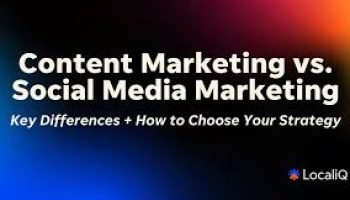Maximize Your Income: Expert Tips for Effective Online Monetization
Maximize Your Income: Expert Tips for Effective Online Monetization Turning your website or blog into a money-making machine is not an overnight success. It requires a mix of strategy, dedication, and a willingness to experiment. Whether you’re new to monetization or looking to optimize your current methods, there are proven strategies to help you maximize your income online. Here’s a collection of expert tips to help you monetize effectively and boost your revenue streams. 1. Understand Your Audience Before diving into any monetization method, it’s crucial to have a clear understanding of your audience. Who are they? What are their needs, interests, and pain points? When you know your audience inside and out, you can tailor your monetization strategy to offer products, services, and content that resonates with them. Use analytics tools like Google Analytics or social media insights to gather data about your visitors and followers. This data will help you decide which products to promote or what type of content to create for maximum engagement. 2. Create High-Quality, Engaging Content The foundation of any successful monetization strategy is high-quality content. Whether it’s blog posts, videos, or podcasts, your content should always be engaging, informative, and valuable. Content is what attracts visitors to your website, and the more visitors you have, the higher your chances of earning money. Consistency is key here—publish content regularly, and make sure it’s aligned with what your audience is looking for. If you’re just starting out, consider writing detailed, long-form posts or creating engaging video tutorials that add value. 3. Optimize Your Website for SEO Search Engine Optimization (SEO) is essential for driving organic traffic to your site. The more traffic you have, the more opportunities you have to monetize. Start by optimizing your website for relevant keywords, both short-tail and long-tail, to ensure you rank higher in search engine results. Focus on creating quality, keyword-rich content, optimizing meta tags, and improving your site’s loading speed. SEO tools like Ahrefs, SEMrush, or Yoast SEO can help you identify keywords, improve your content, and keep your site optimized for search engines. 4. Use Affiliate Marketing to Earn Passive Income Affiliate marketing is one of the best ways to monetize your website without having to create your own products. With affiliate marketing, you promote other people’s products or services and earn a commission on any sales generated through your referral link. To be successful with affiliate marketing, choose affiliate programs that align with your website’s niche. For instance, if you run a tech blog, consider promoting tech gadgets or software through affiliate programs like Amazon Associates, ShareASale, or CJ Affiliate. One of the secrets to success in affiliate marketing is to naturally integrate affiliate links into your content. Instead of just placing them at the end of a post, consider adding them throughout your articles where they make sense. Be transparent with your audience and always disclose affiliate links. 5. Leverage Sponsored Content and Brand Collaborations Sponsored content is another great way to boost your website’s income. Brands are always looking for influencers, bloggers, or websites with an engaged audience to promote their products or services. Sponsored content usually involves a brand paying you to create a piece of content (such as a blog post or video) that features their product. To attract sponsors, focus on building a strong relationship with your audience and consistently creating valuable content. Once you have a solid following, reach out to brands or sign up for platforms like Influence.co or Sponsorship.com to connect with potential sponsors. 6. Launch Your Own Online Store If you have products to sell, launching an online store is an effective way to monetize. Selling physical or digital products directly from your website allows you to maintain full control over pricing and inventory. You can sell products that relate to your niche, such as merchandise, books, or courses. Platforms like Shopify, WooCommerce, or Big Cartel make it easy to set up and manage your own online store. If you’re in the creative space, consider selling print-on-demand merchandise, like T-shirts, mugs, or posters, through services like Printful or Teespring. 7. Create a Subscription-Based Model If you offer premium content, services, or exclusive access, consider implementing a subscription-based model. This allows your audience to pay a recurring fee for access to your content or services. Membership platforms like Patreon or MemberPress can help you set up subscription-based models for your website. Subscription models work well for sites with a loyal following, such as educational platforms, niche blogs, or content creators offering behind-the-scenes or early access to content. The beauty of this model is that it creates a steady and predictable revenue stream. 8. Sell Your Expertise: Coaching or Consulting Services If you’re an expert in your field, offering consulting or coaching services is a great way to monetize your website. You can provide one-on-one coaching, group sessions, or online consulting, depending on your niche. Promote your coaching services on your website, using dedicated landing pages and testimonials to build trust with potential clients. Tools like Calendly and Zoom make it easy to schedule and conduct virtual consultations. 9. Monetize Through Donations and Crowdfunding If your content adds value to your audience’s lives, you can monetize it through donations or crowdfunding. Platforms like Ko-fi, Buy Me a Coffee, or Patreon allow your followers to support your work financially. This model works best for content creators, artists, and independent entrepreneurs. Donations don’t always need to be tied to specific products or services. If you’re providing free educational content, for example, you can ask your audience to contribute voluntarily to support your efforts. 10. Optimize Your Social Media Channels for Monetization Social media platforms can play a huge role in boosting your online revenue. Platforms like Instagram, YouTube, TikTok, and Facebook offer multiple ways to make money, such as ad revenue sharing, sponsored posts, affiliate marketing, and promoting your own products or services. Promote your website and its content on social media, and integrate monetization strategies on these platforms. For



















